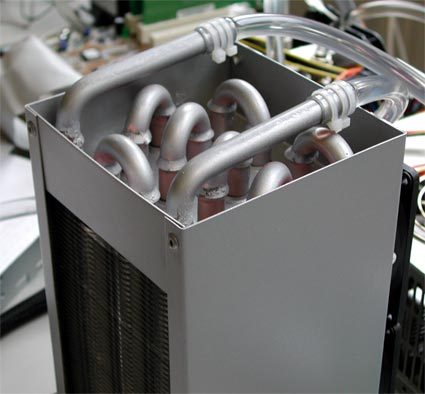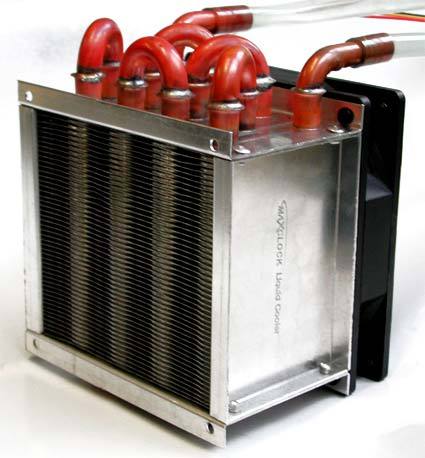Clash Of The OC'd Titans: Athlon XP 2300+ vs. Pentium 4/3000
Tuning AMD & Intel CPUs In Practice
Both the Intel and AMD platforms were operated with the help of a watercooling system, otherwise it would have been impossible to overclock the Athlon XP and the Pentium 4. Those that are currently looking for the fastest CPU can choose between an AMD Athlon XP 2000+ with 1666 MHz or an Intel Pentium 4 with 2200 MHz. However, there is a great difference in price: a Pentium 4/2200 usually costs twice as much as an Athlon XP 2200+. Users who are still unsatisfied with the performance offered by these two top CPUs can enhance it even further, but only by overclocking. AMD and Intel have each integrated an overclocking protection in their processors, though, so overclocking isn't all that easy a task. Both manufacturers have implemented a fixed clock multiplier to limit the actions of inexperienced users.
Depending on the external temperature, the enormous heat exchanger can cool the water to almost 0 degrees Celsius. This is how efficient cooling of AMD and Intel CPUs is made possible.
The "small" heat exchanger is only appropriate for marginal overclocking. For extreme overclocking, the larger version is required.
At the same time, the fact of the matter is that a high performance processor alone does not a high performance system make. An important component to successful overclocking is the motherboard, which must allow you to set the Front Side Bus and the memory clock. The most important criterium in checking for appropriate boards was the CPU core voltage - the performance of a processor cannot be continually increased without substantially increasing the processor voltage! At the moment, there are only a few boards that will allow voltages which do not adhere to the specifications of the CPU manufacturer. In thoroughly examining 50 boards for overclocking suitability, we found that Gigabyte offered the best conditions for both platforms. So for our AMD platform, we used the Gigabyte GA-7VTHX, which, however, does not offer the best performance among boards with the VIA KT266A chipset. Ultimately, what's more important is that the board provides a good basis for an extreme increase in clock speed, and that it guarantees stable operation, as well.
Get Tom's Hardware's best news and in-depth reviews, straight to your inbox.
Current page: Tuning AMD & Intel CPUs In Practice
Prev Page Speed Euphoria: AMD Vs. Intel - Who's Ahead? Continued Next Page Tuning AMD & Intel CPUs In Practice, Continued
